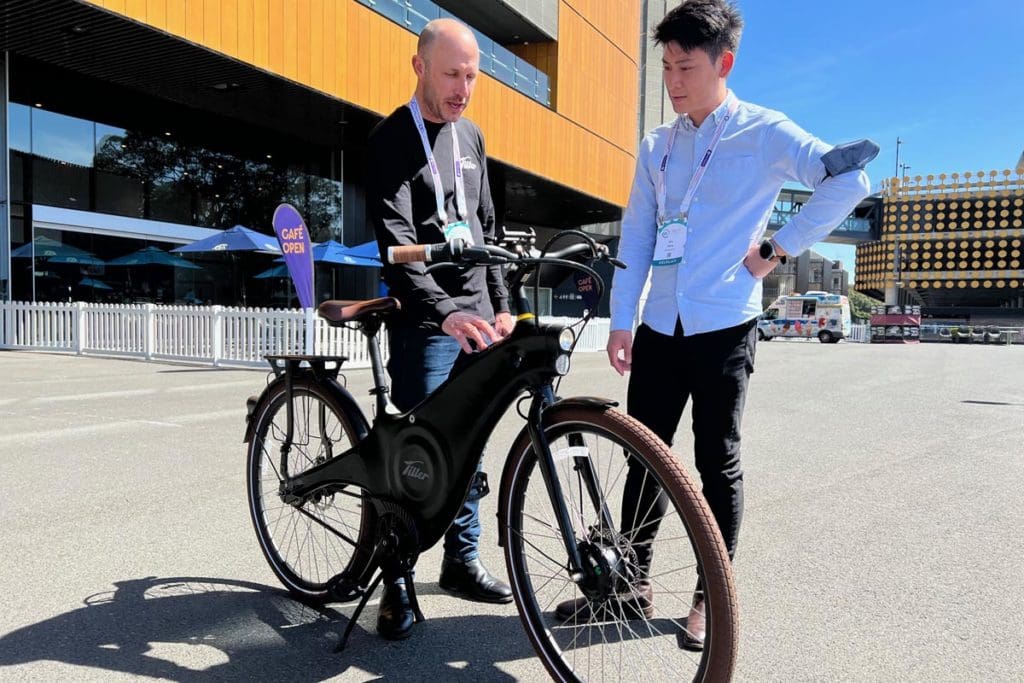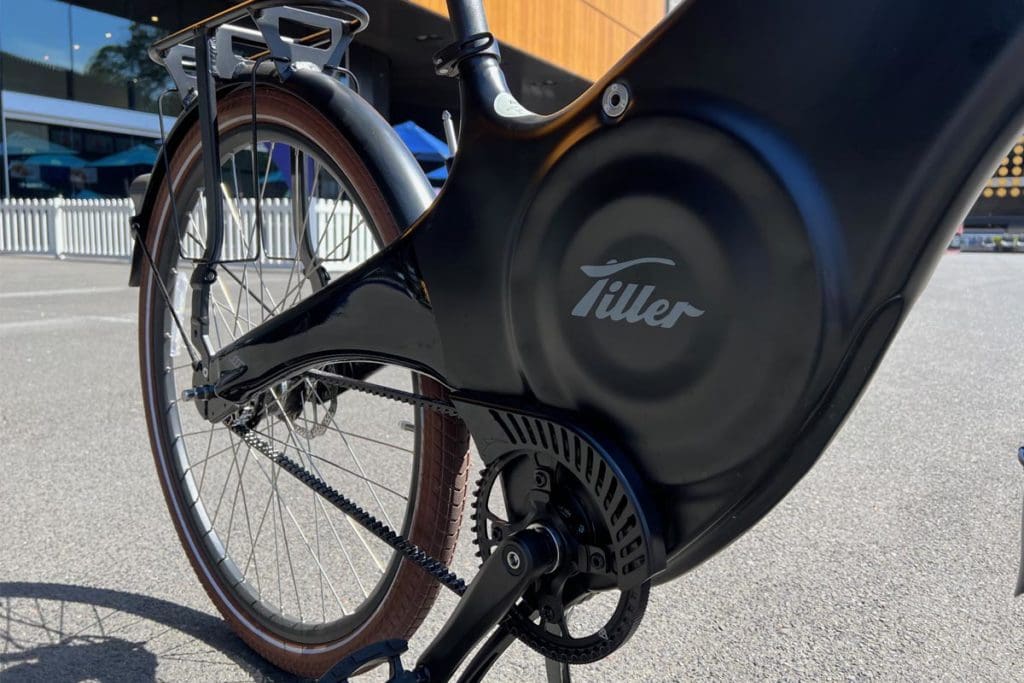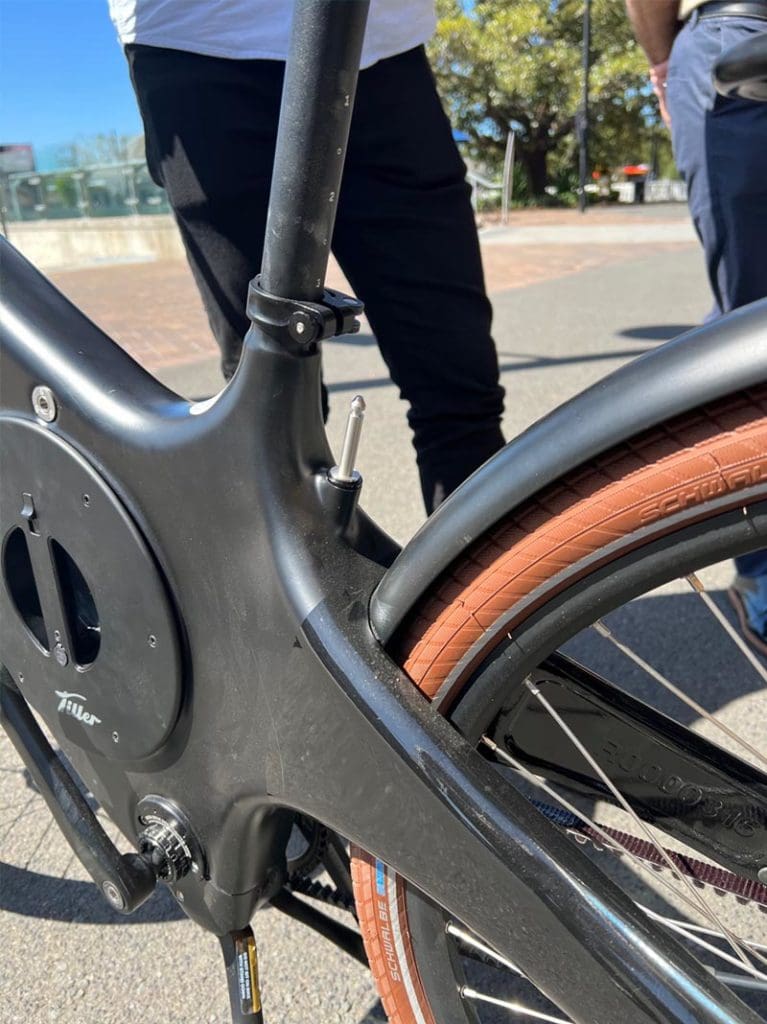Tiller Sows Seeds for Greater E-Bike Integration and Innovation

Fremantle, WA
A WA e-bike manufacturer with ambitions to be Australia’s micromobility answer to Tesla has released its first batch of bikes on the eastern seaboard.
The Fremantle start-up, Tiller Rides, has started delivering approximately 50 of its pre-ordered Roadster e-bike up and down the east coast, after previously supplying initial buyers in its home state.
Tiller began manufacturing pilot batches of the Roadster in March, on a dedicated production line in China, and is now building 60-80 bikes per month.
With the fifth batch due to arrive just before Christmas, Tiller launched its online sales platform this month, offering 14-day money back guarantees for the Roadster, along with a ride now, pay later finance offer.
“People can now order the Roadster from all over Australia and we’re looking to significantly increase our production levels over the next year,” Tiller co-founder and managing director Julian Ilich said.
Julian timed his visit to the east coast, to distribute pre-ordered bikes, to coincide with the inaugural Micromobility Conference & Expo, held at Sydney’s Royal Randwick Racecourse on 25th and 26th November.
He was one of around 140 industry leaders, tech developers, government officials and advocacy experts at the conference. Many key figures have celebrated the event as a key milestone in bringing the sector together and fostering further vital collaboration among industry members.
At the same time, more than 900 people attended the accompanying expo. While numbers were down on expectations, organisers and exhibitors were optimistic the maiden event had set a solid platform for next year and beyond.
Clearer Picture of Australian Industry
Julian said the event had given him a clearer understanding of the current status of Australia’s micromobility industry.
“Everyone is impressed by what Tesla has done for the electric car industry but people generally aren’t investing in similar initiatives to progress micromobility here in Australia.”
“It’s not as advanced as I’d thought,” he said.
“We’re still at a stage where we have a lot of enthusiastic people calling for more expenditure on bike lanes but not really getting mainstream traction.
“At the same time, it seems the focus and investment are almost entirely on shared e-bikes and e-scooters, when there needs to be a similar focus and support for the private ownership sector.
“Everyone is impressed by what Tesla has done for the electric car industry but people generally aren’t investing in similar initiatives to progress micromobility here in Australia.
“We can be the Tesla of micromobility in this country.”
Tiller has attracted more than $5 million in a mix of equity crowdfunding and private investment since the company developed its first prototype in 2016.
Julian started tinkering with the idea of a fully integrated e-bike back in 2015 and partnered with two friends, a 3D modeller and a graphic designer, to pursue the idea.
Their business model is firmly modelled on the approach of Amsterdam e-bike company VanMoof, in seeking to have as much control over the production of its bikes as possible. That includes establishing a dedicated production line at a Chinese factory, as well as maximising the number of bike parts it creates inhouse.

Inhouse Electronics
It engaged two former Microsoft technicians to develop Tiller’s own electronics for the entire bike.
“We’ve also built the control switch the way we wanted it because that’s part of the alarm system. Once the alarm is on, it turns off the motor and there’s no way a thief is going to get it started again,” Julian explained.
“Whereas with other e-bikes, once they cut the cable, they can ride the bike away.
“Our electronics control the whole bike, so you don’t have an app to control your motor, then another app to control the lights and another for the GPS.”
The Roadster is powered by a Bafang 250-watt front-hub motor, which Tiller chose largely because it’s so quiet – part of Tiller’s quest to create an e-bike that is “like an Apple product”.
Tiller decoded the motor’s communications channel, in liaison with Bafang, so Tiller’s own system can control the front hub’s electronics.
“The Roadster’s equally distinctive monocoque design has been central to Tiller’s goal to create an e-bike that is fully integrated, stylish and a transportation option that has appeal beyond the traditional cycling community.”
“The whole electronics system works seamlessly. We can do diagnostics to look into our electronics, which pull fault codes out of the Bafang system,” he said.
They can do the same with the Roadster’s removeable lithium-ion battery, which has a range of 80km at full power and was developed by Tiller in collaboration with a leading manufacturer that also creates batteries for Honda.
In a further break from mainstream e-bike convention, Tiller chose to create a round battery that screws into the heart of the Roadster’s aluminium monocoque frame and complements the bike’s overall aesthetic.
Julian says the Roadster’s equally distinctive monocoque design has been central to Tiller’s goal to create an e-bike that is fully integrated, stylish and a transportation option that has appeal beyond the traditional cycling community.
While the majority of e-bikes adapt electronics to the standard bicycle design, the Roadster’s comparatively radical construction sought to capture the imagination of people who previously might not have considered e-bikes as a viable alternative to travelling by car.
Constructing the frame from pressed aluminium added some weight, compared to carbon fibre, but was incremental in an e-bike that weighed a total of 25kg.
“More importantly, it means the frame, like much of the bike, can be fully recycled,” he said.
“We’re driven by sustainability principles and carbon is currently not recyclable. And it’s unlikely to be, any time soon, because of its structure.”
“The monocoque frame also allows you to have heaps of integrated features and to hide them.”
The frame incorporates the bike’s keyless motion-sensing alarm system, all the electronics, a front light, a rear light with an automatic brake light, a built-in cable lock, sturdy double stand, rear carrier rack and USB port.
Tiller has also opted for a belt drive system to further create a low-maintenance bike suitable for riding in any clothing.
Julian says all those factors have helped make the Roadster particularly popular among women, compared to the general participation rate of females in cycling.
Around 50% of the pre-sold Roadsters were purchased by women.
Durable Fleet Option
He said that integration and the durability of the 3.2kg monocoque frame are also positioning the Roadster as a great fleet vehicle.
The RAC (Royal Automobility Club) WA has made Roadsters available for staff to travel to and from work and WA mining magnate Andrew Forrest has some for his Minderoo Foundation office.
A 55 & Over lifestyle village has a fleet of four Roadsters for its residents to share and Tiller is in discussions with other organisations keen to incorporate them into their fleets.
“We have a niche with higher-end businesses that want something that looks nice and is robust – apartments, hotels, that sort of thing,” Julian said.
“It’s the high-end look and they want as much built into the bike as possible. Otherwise, they have to supply locks, keys, lights, racks and other features to make the bikes practical for their users,” he said.
Tiller is currently selling the Roadster for $4,750 to encourage early sales and that price will soon revert to $4,950.
Julian said they were keen to keep the price under $5,000 and position the Roadster as an e-bike with “high end features for a mid-range price”.
“We should be able to get the price down to $4,500, maybe even $4,000, once we get to producing around 5,000 to 10,000 bikes build each year,” he said.
“We hope to get to those volumes within the next 12 months.”

European Ambitions
Tiller is also optimistic Europe will be a strong market for the Roadster, which has undergone all the certification required to sell on the continent.
“Europe is a much more mature market for e-bikes and, after attending the micromobility conference, it’s apparent the market here is not as developed as I thought. But it seems to be changing quickly,” according to Julian, who is a behavioural change expert, as well as a designer and engineer.
“Mainstream thinking in Australia is the future is electric cars. Ninety-nine percent of people understand what’s going on with electric cars and the idea we’re going to be getting around with micromobility … that’s nowhere near mainstream yet.
“I’m thinking it could be a slow burn here in Australia.”

This is the ugliest bike I’ve ever seen
I never understood this one. $5000 for a Chinese manufactured ebike with old tech front hub motor? With then an online only strategy there is no local support outside Perth.